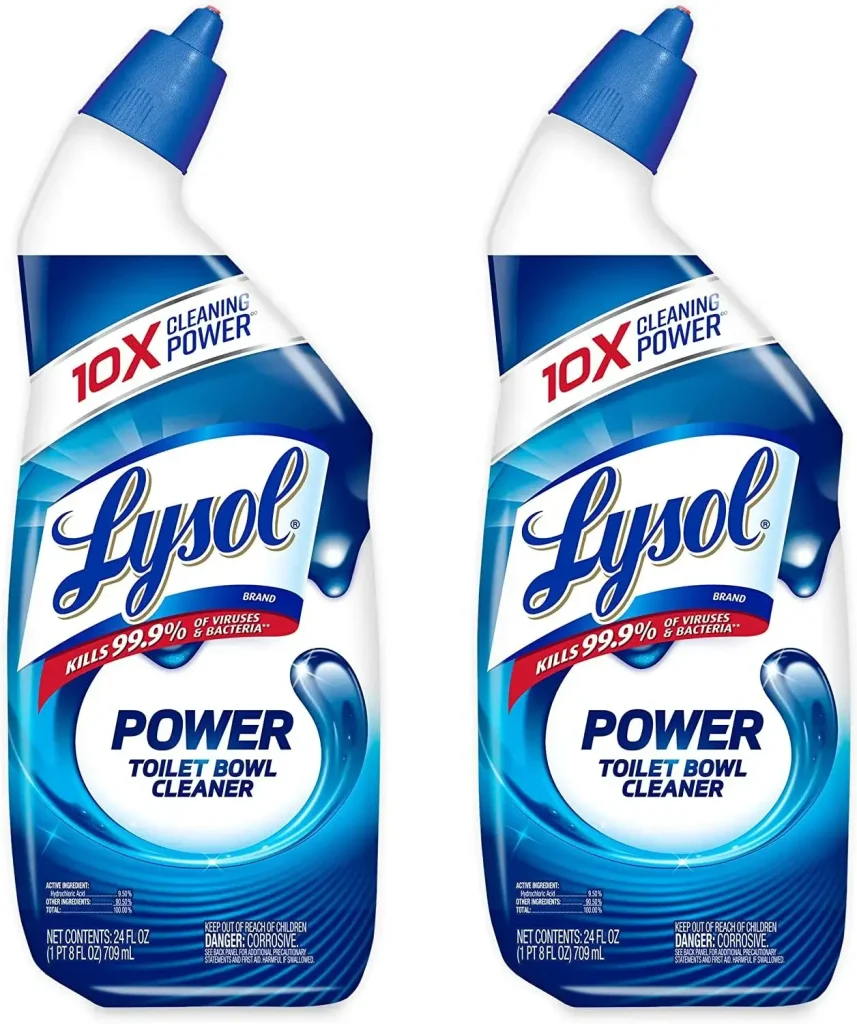
Is Lysol Toilet Bowl Cleaner Safe For Your Septic?
Let’s start by examining what’s inside some of Lysol’s most common toilet bowl cleaner products:
Ingredients
LYSOL® Toilet Bowl Cleaner – Bleach
Sodium Hypochlorite, Water, Myristamine Oxide, Bentonite, Sodium Hydroxide, Sodium Dodecylbenzenesulfonate, Sodium Lauroyl Sarcosinate, Sodium Octyl Sulfate, Sodium (C10-16) Alkyl Benzenesulfonate, Fragrance/Parfum, C.I. Pigment Blue 29, Quartz, 2,6-Dimethyl-2-Heptanol, 2-tert-Butylcyclohexyl acetate, 4-tert-Butylcyclohexyl acetate, Beta-Naphthyl Ethyl Ether, Butylphenyl Methylpropional, Diphenyl Ether, Eugenol, Isoeugenol, Sodium Sulfate, Sodium, Calcium Sulfate
LYSOL® Deep Reach® Toilet Bowl Cleaner – Complete Clean
Hydrochloric Acid, Water, PEG-2 Hydrogenated Tallow Amine, C10-16 Pareth (C12-16 Alcohols Ethoxylated or C10-16 Alketh), Methyl Salicylate, Acid Blue 93
So, Lysol really septic-safe?
Lysol claims that its toilet bowl cleaners are safe for septic systems, but a closer look at the ingredients suggests a more cautious approach. Both products include strong disinfectants like sodium hypochlorite (bleach) and hydrochloric acid—powerful cleaners, no doubt, but also substances that can harm the delicate ecosystem inside a septic tank.
These ingredients are great for tackling tough stains and mineral build-up, but they don’t distinguish between harmful bacteria and the beneficial microbes your septic system needs to function properly. Frequent or excessive use of such cleaners could gradually disrupt your septic balance, increasing the risk of system inefficiencies or backups.
That said, moderation is key. When used occasionally and in small amounts, these cleaners get heavily diluted in the thousands of gallons of wastewater in your tank. In that diluted form, they’re unlikely to cause serious harm to your septic bacteria. So while Lysol’s claims aren’t entirely off the mark, responsible and limited use is the best way to stay on the safe side.